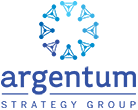![]() Because many of my clients are B2B companies, we often consider LinkedIn for the marketing mix. I am a frequent user, but I have often wondered how to use LinkedIn better for my clients and for my own business. A few weeks ago I attended a symposium sponsored by LinkedIn, hoping to learn more. The morning consisted of a talk by Jonathan Lister, LinkedIn’s VP of Marketing Solutions, a social media panel discussion and an overview of LinkedIn consumer analytics and insight capabilities by Brian Thome, LinkedIn’s Head of Insights. The event was well-run, the speakers were knowledgeable and engaging, and it was 2 hours well spent for me.
Because many of my clients are B2B companies, we often consider LinkedIn for the marketing mix. I am a frequent user, but I have often wondered how to use LinkedIn better for my clients and for my own business. A few weeks ago I attended a symposium sponsored by LinkedIn, hoping to learn more. The morning consisted of a talk by Jonathan Lister, LinkedIn’s VP of Marketing Solutions, a social media panel discussion and an overview of LinkedIn consumer analytics and insight capabilities by Brian Thome, LinkedIn’s Head of Insights. The event was well-run, the speakers were knowledgeable and engaging, and it was 2 hours well spent for me.
I came away with quite a few ideas for my clients, and I wanted to share some of the key insights I gained. Hopefully you’ll come away with at least one new idea even if you already know a lot about LinkedIn!
1. Develop Guidelines For Your Employees’ Profiles You can leverage your employee’s LinkedIn profiles to enhance your overall brand messaging. Because LinkedIn is optimized for search, you can enhance your company’s chances of being noticed with consistent messaging across your employee’s profiles. After hearing this, I reviewed some of my clients’ employee profiles in LinkedIn. Sure enough, I found that for one of my clients their employees listed the company name 3 different ways and the company’s category 8 different ways!
Some corollaries to this include:
1a. Employee profiles can also be a great way to amplify your content on LinkedIn. Consider asking all employees to sync their profiles to your company blog.
1b. Profile alignment can also help when potential customers/clients look up your company on LinkedIn. While doing this, they may take a look at some of your employee profiles as well.
1c. Measuring employee brand alignment could also be a useful metric for social media branding for your company.
2. The Power Of LinkedIn Advertising Jonathan Lister gave a very funny example of the targeting power of LinkedIn advertising. A job candidate created LinkedIn ads that essentially targeted only Jonathan! He did this by using the detailed demographic screening tools available. Jonathan finished the story by noting that while the candidate did get an interview slot due to his ingenuity and persistence, he did not ultimately get the job.
3. LinkedIn Today Can Be a Valuable Tool For Amplification One of LinkedIn’s newer tools is LinkedIn Today. This is a digest of articles pushed to you by LinkedIn in partnership with Twitter via email. The articles you receive are driven by a variety of factors including people and companies you’re connected to and the industry you have listed on your profile. Theoretically this means that if you are active about posting industry-relevant content on LinkedIn and Twitter, it may show up in the LinkedIn Today of your connections. I think this will be intriguing to pay attention to as the tool evolves. Also, now that I know more about the tool, I have been reading the articles and have noticed that they are often professionally interesting!
4. Quality Of Your Connections Is Key. The LinkedIn team emphasized that higher quality first degree connections leads to higher quality second degree connections. So if you’re looking to use LinkedIn to get connected to people’s second degree connections, a solid endorsement is most likely to come from someone who you actually know. I have always been a stickler for only connecting with people I know beyond their business card info, and have written about it in the past, so I was glad to hear this! For more on this, read my post, LinkedIn Etiquette.

That first point hit home for me. I’m headed over to LinkedIn to see how people on my team have listed and categorized the company. I suspect that it’s going to be messy…
Great tip! Thanks for distilling down the event.
PS: If you or any of your clients find success with LinkedIn advertising, please let me know.
Great suggestions!
I had never considered leveraging employee LI profiles for branding purposes.